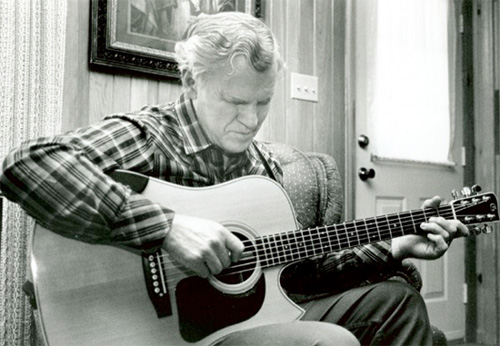Videos by American Songwriter
Conversely, Seth’s “Bella Donna” focuses a direct line to vulnerability. His most tender offering on The Second Gleam-“Have you ever really seen me,” he aches, “Like I want for you to see me now?”-merges bleak and bluster into solemn desire. “At risk of sounding too flighty, ‘Bella Donna’ was a song that just kind of wrote itself,” he explains. “I wrote it in about 10 minutes. It was all just there for me. It wasn’t because it was just so personal, it was because it was in the air, I guess. We haven’t found a way to make writing easy. One song comes in 10 minutes, and the next idea takes three years.”
Now, North Carolina has turned out a few noteworthy songwriters.
Make that more than a few. In fact, simply rationing Scott and Seth’s favorites-Doc Watson, the Squirrel Nut Zippers and Blind Boy Fuller, for a start-threatens to quash Ramseur’s bold proclamation. However, few know the vinyl treasures he’s pocketing right now. If the Avetts’ forthcoming collection pays out on its immeasurable promise (you are, after all, reading a magazine cover story about a band still tweaking an unfinished record), no currency will hold more value than “I and Love and You.” By turns poignant and profound, the elegant ballad effortlessly weaves triumph through drying tearstains.
“My hands, they shake and my head, it spins/Oh, Brooklyn, Brooklyn, take me in,” the brothers sing, “When at first I learned to speak/I used all my words to fight/With him and her and you and me/But it’s just a waste of time/Oh, it’s such a waste of time.” Stop. Pay attention to this seamless strain channeled from the finest songbook: “That woman, she’s got eyes that shine/like a pair of stolen, polished dimes/She asked to dance, and I said it’s fine/I’ll see you in the morning time.”
“I pulled some vocal moves that Townes Van Zandt had used on a couple songs,” Scott explains, “and I wrote it like a Townes song. It was just verse after verse after verse. I love that because the song moves and never gets hung up on a chorus. That’s a true folk or country-folk song. But then Rick was like, ‘Man those two verses are just killing me. I want to hear them again.’” Voila. Rubin the structural guru has arrived. Start taking notes.
“As I recall, Rick said that if Neil Young wrote this song, in between every verse he’d say, ‘Helpless, helpless, helpless,’” says Avett Brothers bassist Bob Crawford. “It was Rick’s idea to have the ‘Brooklyn’ verse repeat. It already was a story, but having that made it a folk song. Instead of this rambling march of verses, Rick understands that music needs hooks. You need that repeated chorus that everyone can sing along to. I saw [children’s songwriter] Si Kahn give a workshop at MerleFest in the early 1990s, and he talked about how important that is. That’s what Rick brought to the song.”
“So, we cut out two verses, took the sixth and turned it into a chorus and took another and turned it into a concept and theme,” Scott continues. “Now, you have a chorus, a theme and bridge that ends up as an outtro and a whole new and refined song that keeps all the great elements of the verses. That doesn’t work for every song-and it didn’t work for a couple we tried-but you have to be able to flex as a songwriter.” Intricate word play especially fortifies the new songs “My Heart Like a Kick Drum,” “Standing with You” and the rasta-folk breakdown “And It Spread.” Ambition and vision never stray.
The brothers certainly strive for instrumental elasticity, too. Listen to 2005’s Live, Vol. 2. The most timeless swatches-in particular, “Pretty Girl from Annapolis” to “Do You Love Him” and “Smoke in Our Lights” through the dusky ramble “A Lot of Movin’”-are straightforward derivation of the bluegrass guitar-banjo-doghouse bass blueprint. But by Emotionalism in 2007, Sgt. Pepper had invaded the hills. Meanwhile, “Yesterday” discovered a neighboring holler leading into The Second Gleam.













Leave a Reply
Only members can comment. Become a member. Already a member? Log in.